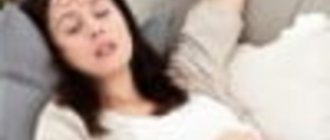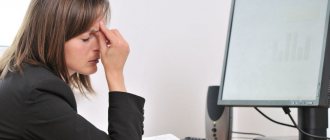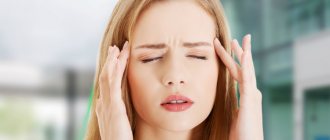Headache in the temple area bothers people of all ages. Some people experience headaches in the left temple or the right, while others suffer from pain in both temples. At the Yusupov Hospital, doctors first use a comprehensive examination to determine the cause of the headache in the temple. Treatment is prescribed depending on the type of pain.
Neurologists, therapists, and oncologists collectively establish a diagnosis and develop patient management tactics. Professors and doctors of the highest category use innovative methods of headache therapy. The medical staff is attentive to the wishes of patients. Psychotherapists provide support to patients with unstable emotional states.
The main causes of pain in the temples
Headache in the right or left temple can be caused by various reasons. It can have a pulsating, pressing character, and less often it can be cutting. A severe aching headache in the temple area often occurs in the morning, which forces the patient to wake up before the alarm clock.
Attacks of headaches in the temples come unexpectedly. If you have a headache in the temporal region, you should immediately contact a therapist at the Yusupov Hospital. He will conduct an initial examination and prescribe an examination. After receiving the research results, the therapist refers the patient to a neurologist, cardiologist or oncologist. If necessary, patients undergo a complex examination and receive consultations from leading specialists from partner clinics.
The most common cause of frequent headaches in the temples is considered to be pressure drop. Seizures can occur due to some disease. There are more than two hundred main causes that can cause headaches in the temples. The most common causes of temporal headaches include:
- disruption of the circulatory system;
- viral and bacterial diseases;
- age-related changes in the body;
- intoxication;
- trigeminal nerve entrapment;
- hormonal dysfunction;
- carious teeth.
It is worth noting that absolutely any pain that is felt in the facial area can provoke the appearance of temporal pain. The true cause of a headache is difficult to identify. Constant headaches in the temples and forehead often bother people who lead a busy lifestyle, get tired, and get little rest.
Causes
Insomnia
Sleep disorders are accompanied by stress at home or at work, various diseases of the internal organs or a disorder of the nervous system. Systematic lack of sleep leads to cephalalgia, nausea, and loss of appetite.
After several days of insomnia, a person begins to experience mental disorders, impaired memory and attention, irritability, and weakness.
Overwork
When overworked, cephalgia is usually localized in the temples and frontal part, the pain radiates to the eyes. It occurs due to the accumulation of undigested glucose products in the brain tissue.
This leads to swelling and puts pressure on pain receptors located in the vessels. From here the pain spreads to the temples and eyes.
Altitude sickness
As altitude increases, atmospheric pressure drops, and as it decreases, the partial pressure of oxygen in the air mixture decreases. Up to an altitude of 4000 m, the body independently compensates for its lack; this happens due to rapid breathing and an increase in the volume of inhaled air.
When a person rises higher, there is a severe lack of oxygen. This is called mountain sickness, which can lead to cephalalgia, soreness in the eyes and muscles, and joints begin to ache. Nausea and vomiting often occur.
Air travel
The pain is caused by changes in altitude, disruption of the circadian rhythm, or contact with irritants on an airplane. May affect the ear and brow nerves.
Severe changes in pressure lead to rupture of blood vessels or the eardrum, causing severe pain.
Dental diseases
Dental diseases can cause pain in the orbit or under the eyes. It goes into the eye. Most often, the organs of vision and teeth are not connected to each other, but during purulent processes, the contents spread to any area, causing inflammatory processes, hence the characteristic signs.
Meningitis
The pain is more pronounced with purulent meningitis. The symptom may be accompanied by vomiting and nausea. With light and sound loads, cephalalgia intensifies, it increases with palpation of the eyeballs and radiates into the orbit.
Migraine
This is a lot of pain. Manifested by sensitivity to light, nausea, vomiting, dizziness, blurred vision and pain in and behind the eyes.
Migraine lasts up to several days. There is an eye type of the disease, when the main complaints are related to changes in vision.
Trigeminal neuralgia
With this condition, headaches vary in duration and intensity. During the next attack, severe salivation and lacrimation occurs, the face turns pale or red.
Usually the symptom is localized in the forehead, cheeks, jaws when talking and chewing. There is no pain in the eye area, but when severe it radiates into the orbit.
Glaucoma
Cephalgia and pain in the eye are characteristic signs of glaucoma. Sometimes the visual organ does not bother, which makes diagnosing the disease much more difficult.
Cephalgia appears due to irritation by a light source, overwork, and increased blood pressure. When glaucoma is advanced and bilateral in nature, it spreads to the parietal and frontal zone.
Sarcoidosis
More than half of patients with this diagnosis experience eye problems, ranging from dryness to inflammation. When the optic nerve deteriorates, the pain is localized in the area of the orbit and organs of vision, and a feeling of pressure appears in the temples.
Shingles
Characterized by the appearance of skin symptoms. The pain associated with the pathology is relatively mild and is more often observed at night or during rest. Rarely localized in the temporal region.
Temporal arteritis
Inflammation of the temporal artery leads to damage to the optic organ, leading to the development of iritis and conjunctivitis. The disease is accompanied by severe cephalalgia, insomnia, redness of the conjunctiva and increased body temperature.
Cluster type headache
This type of pain is similar to a migraine. It is burning, boring, and often has a seasonal dependence. Cephalgia is unilateral. Most often manifests itself in the temporal lobe and orbit.
Cluster-type cephalgia is accompanied by nasal congestion, redness of the face, swelling of the eyelids and profuse lacrimation.
Types of pain in the temples
Any headache in the temples and eyes is characterized by sharpness and suddenness. If the pain syndrome occurs due to overwork or emotional turmoil, the duration of a temporal headache can be 30 minutes or can last 24 hours. If a throbbing headache in the temples occurs in the morning, it can be assumed that its cause is vascular disorders. This pain is accompanied by general weakness, nausea, and tinnitus.
Headache in the temple area due to trauma can manifest itself in different ways: pulsation in the temples, movement of the source of pain from the temporal lobe to the occipital lobe. If appropriate measures are not taken, acute pain can become chronic.
For persistent headaches in the temples, the causes of which are unknown, doctors recommend that the patient keep a diary. It should note the number and nature of headaches and how they are relieved. Thanks to these records, it will be easier for a specialist to get a picture of the course of the disease.
If you have a headache due to cervical osteochondrosis
Headache with cervical osteochondrosis is caused by compression of these arteries and nerves by the altered vertebrae. In other words, with cervical osteochondrosis, the nutrition of the brain and its membranes is disrupted, and pinching, swelling and inflammation of the nerve roots also occur, which causes pain. Of course, if you have a headache, cervical osteochondrosis is not necessarily to blame, but this is one of the most common causes. As a rule, the disease manifests itself in people who have crossed the 30-year mark. However, a modern sedentary lifestyle, constant sitting at the computer in the wrong position and some other unfavorable factors lead to the fact that osteochondrosis with all its unpleasant symptoms appears at a much earlier age.
Headaches with osteochondrosis of the cervical spine often occur in the neck and back of the head, spread to the temporal region and intensify when turning and tilting the head (“I can’t turn my head”). Patients often complain of constant headaches, which worsen after sleep, when the head and neck are in the same position for a long time. Osteochondrosis not only causes headaches. Also, with osteochondrosis, noise in the head and other unpleasant symptoms are possible. When you move your head in the neck, “something clicks or crunches,” you may experience a sharp headache, accompanied by dizziness and nausea.
Pain in the head with osteochondrosis can be very different. The pain can be localized in the forehead, radiate to the eyeballs and intensify when turning the gaze: “the eyes feel pressure, it hurts, it hurts to move the eyes.” Such a headache with osteochondrosis of the cervical spine is a symptom of increased intracranial pressure as a result of impaired blood outflow due to compression of the veins (the so-called hypertension syndrome).
It also happens that with cervical osteochondrosis, half of the head hurts, one temple hurts and radiates to the eye; the pain is severe, paroxysmal, with vomiting, they are called “cervical migraine”, which must be distinguished from ordinary migraine, because they are treated differently. “Cervical migraine” develops due to irritation of the spinal nerve.
How to get rid of pain in the head and temples
If a severe headache in the temples occurs at home, you can try to get rid of it without resorting to drug treatment. The choice of a method to reduce temporal pain should be approached carefully. You can do a head massage yourself. Find a comfortable position and start massaging your head with your fingertips. If a headache occurs in the right temple, start making massage movements on the right side of the head, if in the left - on the left. Then run your fingers all over your head, including the temporal, occipital, and frontal areas. When you finish the massage, remain in a relaxed state for a few minutes.
Temporal headaches may go away after taking a warm shower. The patient's blood circulation to the brain improves, which allows him to get rid of headaches. The bath relaxes, which will also help relieve pain. Walking in the fresh air for half an hour can reduce headaches in the temples, which are caused by migraines. If, after attempts, the headache in the temples does not go away, contact the Yusupov Hospital.
Non-drug methods for treating temple headaches
Non-pharmacological treatment methods used by specialists at the Yusupov Hospital rehabilitation clinic are aimed at the main mechanisms involved in the formation of headaches. Among them, the leading ones are psychological factors (acute or chronic emotional stress), and muscle tension - myofascial, muscular-tonic, syndromes with the formation of trigger pain points.
The criteria for the use of non-drug treatments are:
- insufficient effectiveness of drug therapy;
- individual intolerance to drugs and or the occurrence of allergic manifestations when taking pharmacological agents;
- the patient’s tendency to become addicted and dependent when taking antidepressants and tranquilizers, which are widely used in the treatment of pain in the temporal region;
- development of abusive headaches with long-term use of analgesics in large doses;
- no contraindications to the use of non-pharmacological methods.
Pain is always a mental phenomenon. The longer and stronger the pain, the more often it is combined with anxious, depressive, hypochondriacal reactions, which can be primary or secondary. The duration and degree of pain affect the patient’s well-being and behavior. Under the influence of pain, personality traits, attitudes towards the world around us, ourselves, and the future change. Psychological correction carried out by rehabilitation clinic specialists is aimed at changing these negative influences, at the following points:
- improved personality functioning;
- correction of the patient’s experiences associated with the presence of constant long-term or paroxysmal recurring temporal headaches;
- elimination of existing emotional disorders.
Doctors at the Yusupov Hospital begin psychological correction from the very first conversation with the patient. The patient is given hope for improvement, anxiety is reduced, and he is encouraged to recover. In addition to an explanatory conversation, psychologists are in a state of hypnotic sleep.
Autogenic training includes:
- relaxation of skeletal muscles;
- regulation of regional heart rate, vascular tone, depth and frequency of breathing;
- mental relaxation through specially selected verbal formulas.
Breathing-relaxation therapy combines elements of mental and muscle relaxation with excursions of the chest in an inhalation-exhalation rhythm. Acupuncture is based on stimulation of strictly defined areas of the skin and subcutaneous tissue in the area of biologically active points. Postisometric relaxation is a technical type of manual therapy. It is used to induce muscle relaxation and pain relief.
Biofeedback is a method as close as possible to testing physiological functions. It differs from others by actively involving the patient himself in the treatment process. The method is based on biological control of physiological functions.
Light therapy is a method of exposure to bright white light. Through the retina, hypothalamus, and pineal gland, it affects circadian rhythms, the activity of melatonin receptors located outside the pineal gland, nonspecific brain systems, and changes endocrine, mental, and motor functions.
Headache
Pain syndrome inside the eye due to headache is a fairly common occurrence, especially pronounced in the cluster type. Such pain is characterized by a paroxysmal course with long asymptomatic periods. The reason is not entirely clear. The pain usually occurs on one side of the head behind the eye. In addition, other signs are observed: redness of the eye, inflammation of the cornea, increased lacrimation.
In women, pain inside the eye is often a consequence of migraine. In addition to headaches, there is general irritability, sensitivity to loud sounds and bright lights, fatigue, and decreased performance.
Another cause of the feeling of pressure, fullness and pain inside the eyeball is hypertension (high blood pressure). In addition, patients may complain of other symptoms such as fatigue, malaise, dizziness and recurring headache.
Pain inside the eye as a secondary symptom
Pain syndrome inside the eye is often associated with ophthalmological pathologies. But often, this is just a secondary symptom, and the pathological focus develops in the surrounding structures of the eye.
So, with frontal sinusitis or sinusitis, an inflammatory reaction is observed in the paranasal sinuses, as a result of which pain appears inside the eye, often of a pressing nature. This phenomenon is associated with the anatomical location of the sinuses, which are close to the orbits.
In some cases, eye pain is one of the signs of dental disease. The structures of the facial region of the skull are interconnected with the branches of the fifth pair of cranial nerves (trigeminal nerve). With the development of a pathological process, in particular an infectious one in the oral cavity: gumboil, caries with deep damage to dental tissue, pericoronitis, an inflammatory reaction may be observed in one of the branches of the trigeminal nerve. This reaction leads to pain inside the eye, migraines, and increased body temperature.
Drug treatment of temporal headaches
When choosing a treatment method for headaches in the temporal region, doctors at the Yusupov Hospital take into account the reason why it occurs. Treatment for tension headaches includes relief of painful episodes and preventative treatment.
In order to interrupt an attack of headache in the temples, simple analgesics and non-steroidal anti-inflammatory drugs are prescribed. Treatment with these drugs should be used when the frequency of attacks is no more than twice a week. The use of simple analgesics should not exceed 14 days per month. The use of any medications for pain relief is monitored by keeping a diary. In patients with chronic headaches and comorbid depression and anxiety, simple analgesics are usually ineffective, and excessive use of nonsteroidal anti-inflammatory drugs can lead to the development of drug dependence.
Patients are prescribed ibuprofen at a dose of 400 mg. It has the least potential to cause gastrointestinal complications. Frequent use of paracetamol in large doses can cause liver damage.
Preventive therapy is carried out for patients with chronic tension headaches. Antidepressants are most often used to prevent pain in the temples. Their effect is due to their own analgesic effect due to increased activity of descending analgesics. The analgesic effect of antidepressants occurs earlier than the antidepressant effect itself and when using smaller doses. The drug of first choice is amitriptyline. Other tricyclic and tetracyclic antidepressants, maprotiline, clomipramine, and mianserin, are also used.
For severe headaches in the temporal region, you can take a simple analgesic or ibuprofen. If the pain does not go away, seek specialized medical help by calling the Yusupov Hospital.
Treatment
A headache does not come on its own; it indicates serious illnesses that significantly worsen a person’s quality of life. Treatment of cephalalgia depends on the cause that provoked its appearance:
- Insomnia is treated with complex measures. Take a walk before going to bed, don’t watch TV an hour before bedtime, get up and go to bed at the same time, don’t drink alcohol at night, forget about coffee, don’t overeat. If necessary, sedatives and medications to help you sleep are prescribed.
- Overwork is best relieved by sleep and long rest. For severe pain, take Analgin and Citramon.
- Meningitis is treated with Ceftriaxone, Cefotaxime. This is a dangerous disease, so therapy is carried out in a hospital setting.
- Migraine is treated with analgesics, anti-inflammatory drugs, ergots and triptans. For frequent attacks, acupuncture, acupressure, and hydrotherapy are prescribed.
- Trigeminal neuralgia. Traditional remedies do not work; it is necessary to take a course of medications if the cause is microorganisms. If the nerve is pinched, a course of physiotherapy is prescribed in conjunction with a massage of the back of the head and neck.
- For the treatment of glaucoma, special drops are used that lower intraocular pressure. The disease is treated with mummy, leeches, and special physical exercises.
- Sarcoidosis is not usually treated. Thanks to the strengthening of the immune system, inflammatory foci resolve on their own.
- If shingles develops, the patient is sent to the hospital. Therapy is aimed at preventing the development, reducing burning and itching, pain and inflammation. Treatment is carried out simultaneously by several doctors, usually an infectious disease specialist and a neurologist. Cephalgia goes away when you receive the first doses of drugs.
- For cluster cephalgia, analgesics, antispasmodics and steroids are taken. For nasal congestion, drops or sprays are prescribed to ease breathing.
- Temporal arteritis is treated with corticosteroids, drugs to dilate blood vessels. To reduce cephalgia and pain in the eyes, analgesics and antispasmodics are prescribed.








